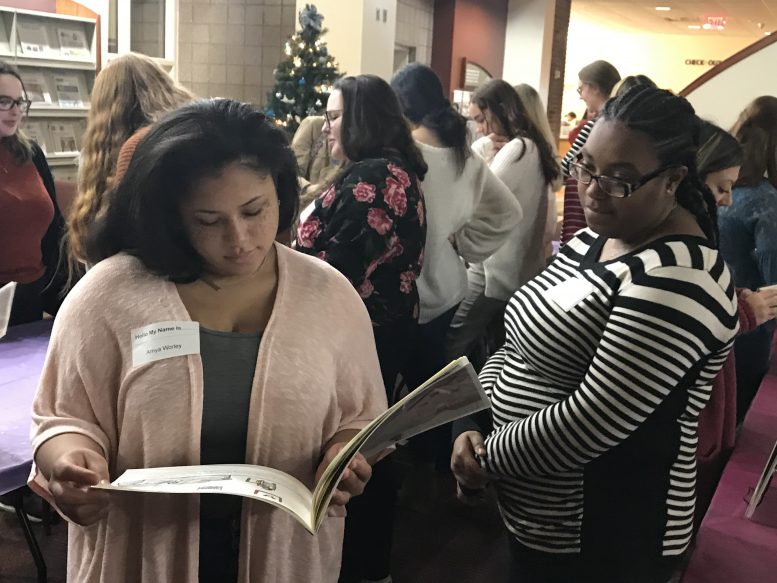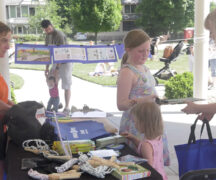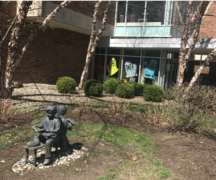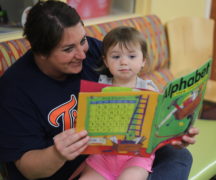By DAVID DUPONT
BG Independent News
Students in the Children Literature course at Bowling Green State University didn’t have to look far to find the topics for their picture books.
Assigned to create a book on a social issue, some may find inspiration a sibling’s experience, or a cousin’s, or they may just look in the mirror.
Earlier this month, the 75 students in the three sections of the course taught by Amanda McGuire Rzicznek and Elizabeth Zemanski presented the picture books they created as the capstone for ENG 3420 at the Wood County District Public Library.
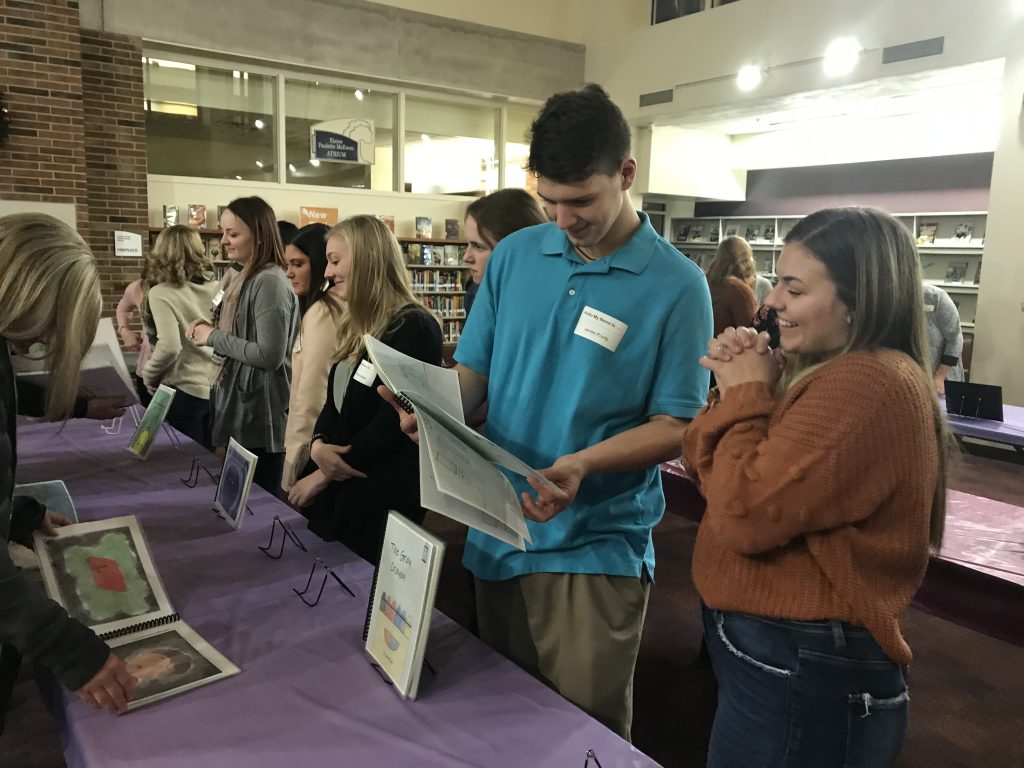
Rzicznek credited Zemanski with coming up with the project, which is in its second year.
“Elizabeth was really wanting to find a way that children’s literature lives beyond the classroom. … So the best way to do that is make a book and share it.”
That’s a challenge for students who are studying education, not art or creative writing.
James Prunty said he didn’t have much experience in this realm, “I don’t know how to color a lot of things. … It was super stressful.”
“It was a little difficult at first,” said Aubrianna Mitchell, “but as we got acclimated to drawing the pictures, it got easier.”
The students got encouragement and advice from Lindsay Moore, a published writer and illustrator who lives in Bowling Green.
The students only had part of a semester to create their books, said Maddie Styles. Professionals can take years to publish a children’s book.
She felt they were trying to “live up to the expectations” of the books they studied in class.
But once it came time to turn their ideas into “actual” books that made it real, Styles said.
The students were pleased with the results.
“I don’t know a lot about art, but I think through a lot of time and effort everything worked out,” Prunty said.
“Once the finished product was done,” said Mitchell, “it was great to see how it turned out.”
“It was very therapeutic,” said Amya Worley.
Like others, Worley, in her book “Curiosity Can Help,” was dealing with an issue that hit close to home.
She had a cousin who was left at home without food to eat. So when he was over at her house he would eat all the time.
In her book, a girl has a friend in a similar siuation, and she helps him by slipping food into his backpack.
Sara Ruckman wrote about an older sibling who had to watch his younger sister, just like her brother did for her, and later she did for her sister.
Claire Smith wrote about a bunny who hates its long ears. “She has to go and talk to her teacher about how she’s going to help herself get over the funk about not loving herself.”
Smith said she’s struggled with her own body image issues.
The students were paired up with someone from the community to help them bring the issue into focus.
Paul Valdez, associate director of the Center for Public Impact, helped the students connect with community mentors.
“It’s a very direct application of what the students are learning in class,” Valdez said. “It gives them a very hands-on project to develop and then share with the community … and they get direct feedback at events like this.”
This was the first time the showcase has been held at the library.
It’s a venue that gets the students’ work out into the community more, Rzicznek said. That there are children at the library also helps.
The courses will have showcases in fall and spring semesters. Also, some students may choose to attend Literacy in the Park if “they want more experience presenting and connecting with their audience.”
Mitchell said she definitely plans to do similar projects with students once she begins her teaching career. It is important to foster children’s imaginations.

